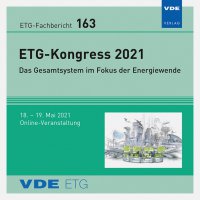Comparative investigations of the thermal behavior of fittings for HTLS conductors under industrial laboratory and rating conditions
Konferenz: ETG-Kongress 2021 - ETG-Fachtagung
18.03.2021 - 19.03.2021 in Online
Tagungsband: ETG-Fb. 163: ETG-Kongress 2021
Seiten: 6Sprache: EnglischTyp: PDF
Autoren:
Soppe, Bastian; Bendig, Marvin; Puffer, Ralf (IAEW of RWTH Aachen University, Germany)
Krispin, Hans-Joerg; Dansachmueller, Mario; Zemke, Simon (RIBE Elektroarmaturen GmbH, Germany)
Inhalt:
The use of HTLS conductors is likely to be a useful method of uprating existing overhead power lines in many cases and avoiding the need for new construction. With a conductive cross-section comparable to that of standard conductors, these conductors can double the ampacity by increasing the permanent thermal rating to over 200 °C. These high thermal loads must also be reliably handled by the fittings used for connecting, suspending and tensioning. However, the maximum permissible temperature of the conductor is only reached at rating conditions (RC) with the maximum permissible current and simultaneous worst case weather conditions regarding the weather. Current test recommendations for fittings are based on the maximum permissible conductor temperature, which is typically associated with the rated current and a hot summer day weather condition. However, in standard industrial laboratories, the heat transfer processes are different which potentially leads to an underestimation of the real temperature of the fitting at maximum conductor temperature. In this paper, the steady state temperature of exemplary fittings under standard industrial laboratory conditions (ILC) is compared with the steady state temperature at RC. It is shown that the temperatures of the tested fittings under industrial laboratory conditions underestimate the temperatures under rating conditions. The finding can be attributed to the differences in relative contribution to the absorption and dissipation of heat of the involved heat transport mechanisms that exist at ILC and RC, respectively. Due to the complex interactions of the various heat transport mechanisms at ILC and RC for both fittings, a single mech-anism cannot be named for the increased temperature of the fitting at RC compared to ILC. However, due to the larger thermal time constants of the fittings compared to the conductor, it takes a significantly longer time to reach a steady thermal state. In Germany, the rating condition of a conductor can usually only emerge during the simultaneous occurrence of a (n-1)-case and a hot summer day situation. Since these periods are likely to be quite short (if at all), the fittings have reserves in this respect due to their high heat capacity compared to the conductor.


